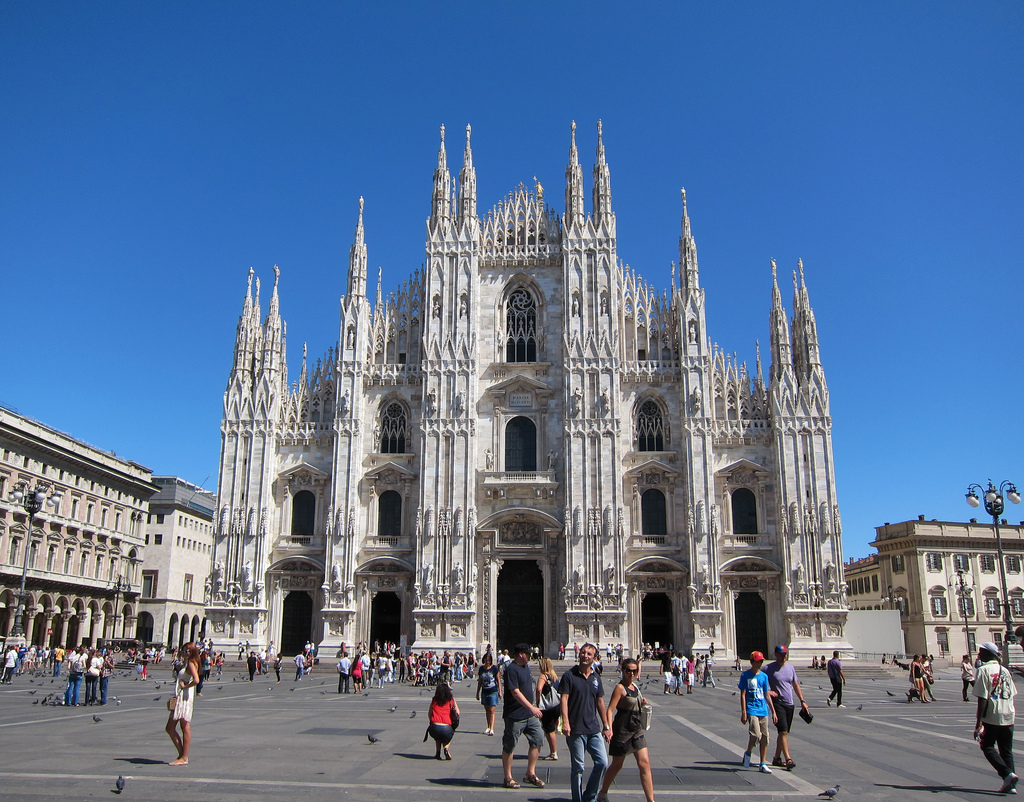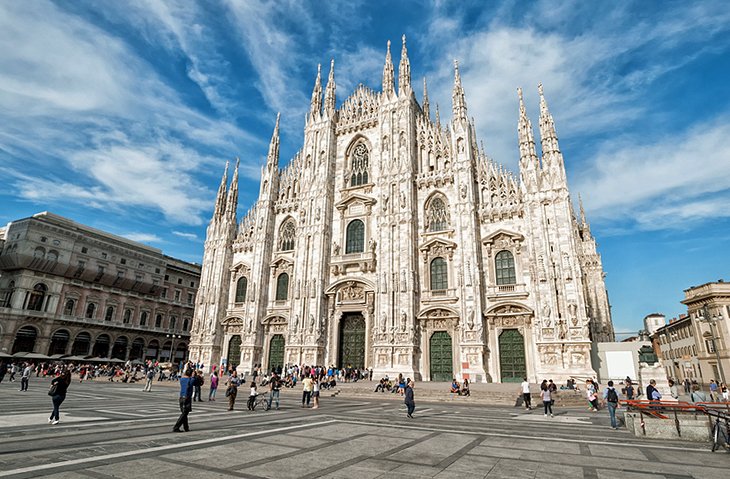
Milan, the fashion capital of the world, pulses with an energy that is both sophisticated and captivating. Beyond its glittering runways and designer boutiques, this Lombardy gem boasts a rich tapestry of history, breathtaking art, and a culinary scene that will tantalize your taste buds. From the awe-inspiring Duomo to the enigmatic Last Supper, Milan offers a compelling blend of the ancient and the avant-garde, drawing millions of visitors each year seeking its unique brand of Italian allure.
This comprehensive guide will take you on a journey through Milan’s most celebrated attractions, delve into its fascinating past, equip you with essential travel tips, explore accommodation options, navigate its efficient transportation network, and pinpoint the optimal times to experience its magic.
Top Attractions: Where Art, History, and Grandeur Collide

Related Articles about Milan: A Symphony of Style, History, and Gastronomy:
- Romania: A Tapestry of History, Legend, and Untamed Beauty – Unveiling its Top Attractions
- A Grand Tour of India: Unveiling the Best Hotels and Experiences
- Australia: A Journey of Wonders, From Cosmopolitan Cities to Untamed Wilderness, And the Hotels That Elevate the Experience
- Krabi: A Tropical Paradise Unveiled – Your Ultimate Guide
- Poland: A Tapestry of History, Culture, and Unforgettable Attractions
Milan’s skyline is dominated by architectural marvels and its interiors hold artistic treasures that have shaped Western civilization. Prepare to be enthralled by these essential Milanese experiences:
1. The Duomo di Milano: A Gothic Masterpiece:
No visit to Milan is complete without standing before the magnificent Duomo. This colossal Gothic cathedral, the third-largest in the world, took nearly six centuries to complete, a testament to its intricate craftsmanship and unwavering ambition. Its façade is a dazzling spectacle of spires, statues, and gargoyles, each telling a story. Ascend to the rooftop for unparalleled panoramic views of the city, a truly unforgettable experience. Inside, marvel at the soaring vaulted ceilings, the stained-glass windows that bathe the interior in ethereal light, and the imposing marble statues. Don’t miss the archaeological area beneath the cathedral, revealing the foundations of earlier basilicas.
2. Galleria Vittorio Emanuele II: The "Living Room of Milan":
Adjacent to the Duomo, the Galleria Vittorio Emanuele II is more than just a shopping arcade; it’s an architectural marvel and a vibrant social hub. This elegant glass-and-iron structure, built in the 19th century, is adorned with intricate mosaics and soaring arches. It houses a collection of high-end boutiques, charming cafes, and renowned restaurants. Tradition dictates a spin on the bull mosaic on the floor for good luck – a ritual enjoyed by locals and tourists alike. The Galleria serves as a grand gateway to the prestigious La Scala opera house.
3. Teatro alla Scala: The Temple of Opera:
For opera aficionados and lovers of performing arts, La Scala is a pilgrimage site. This world-renowned opera house, with its opulent interiors and legendary acoustics, has hosted countless iconic performances and witnessed the rise of operatic legends. Even if you don’t attend a performance, a guided tour of the theatre’s magnificent auditorium, foyers, and museum offers a glimpse into its rich history and the grandeur of its productions.
4. Leonardo da Vinci’s The Last Supper:
Housed in the refectory of the Convent of Santa Maria delle Grazie, Leonardo da Vinci’s "The Last Supper" is arguably one of the most revered artworks in the world. This masterful fresco, depicting the moment Jesus announces his betrayal, is a profound exploration of human emotion and artistic genius. Due to its fragility, access is strictly limited and requires booking tickets months in advance. The experience, though brief, is deeply moving and a testament to Leonardo’s unparalleled talent.

5. Sforza Castle (Castello Sforzesco): A Ducal Legacy:
This imposing fortress, once the residence of the Dukes of Milan, stands as a powerful symbol of the city’s historical might. Today, Castello Sforzesco houses several important museums and art collections, including the Pinacoteca (housing works by Mantegna and Bellini), the Museum of Ancient Art, and Michelangelo’s final, unfinished sculpture, the Rondanini Pietà. The vast courtyards and ramparts offer a fascinating glimpse into medieval military architecture and provide a tranquil escape from the city’s hustle and bustle.
6. The Brera District: Artistic Heartbeat:
The Brera district is Milan’s bohemian soul, a charming labyrinth of cobblestone streets, art studios, antique shops, and cozy trattorias. At its heart lies the Pinacoteca di Brera, a national art gallery housing an exceptional collection of Italian Renaissance masterpieces, including works by Raphael, Caravaggio, and Hayez. Wander through its elegant rooms, soak in the artistic atmosphere, and discover hidden courtyards and picturesque squares.
7. Navigli District: Canals and Bohemian Charm:
Experience a different side of Milan in the Navigli district, a charming area characterized by its network of canals. Once vital waterways for trade, the canals now offer a picturesque setting for leisurely strolls, aperitivo by the water, and exploring unique boutiques and artisan workshops. The Naviglio Grande and Naviglio Pavese are the most prominent canals, buzzing with life, especially in the evenings when the bars and restaurants spill out onto the towpaths.
8. Quadrilatero della Moda (Fashion Quadrangle): A Shopper’s Paradise:
For those with a penchant for high fashion, the Quadrilatero della Moda is an essential pilgrimage. This exclusive district, comprising Via Montenapoleone, Via della Spiga, Via Sant’Andrea, and Via Manzoni, is home to the flagship stores of the world’s most prestigious fashion houses. Even if your budget doesn’t stretch to designer labels, the window shopping itself is an experience, showcasing unparalleled craftsmanship and style.
A Glimpse into Milan’s Rich History
Milan’s story is one of empires, artistic revolutions, and industrial prowess. Founded by the Gauls in the 6th century BC, it rose to prominence as a key city in the Roman Empire, known as Mediolanum. Its strategic location facilitated trade and cultural exchange, laying the groundwork for its future significance.
During the Middle Ages, Milan flourished as a powerful commune, often at odds with its neighbors. The Renaissance saw the city rise under the patronage of the Visconti and later the Sforza families, who transformed it into a center of art, culture, and learning. Leonardo da Vinci’s presence during this era left an indelible mark, with "The Last Supper" being a prime example.
Milan later fell under foreign rule, including the French and Spanish, before becoming the capital of the Duchy of Milan. Its strategic importance continued, and it played a pivotal role in various conflicts and political shifts. The Risorgimento, the movement for Italian unification, saw Milan as a crucial battleground and a symbol of national aspiration.
In the 19th and 20th centuries, Milan emerged as Italy’s industrial powerhouse and financial capital, a reputation it holds to this day. Its resilience in the face of wartime devastation solidified its status as a city that constantly reinvents itself, blending its historical grandeur with a forward-thinking, modern identity.
Travel Tips for a Seamless Milanese Experience
To make the most of your Milanese adventure, consider these practical tips:
- Book in Advance: For popular attractions like "The Last Supper" and the Duomo rooftop, booking tickets online well in advance is crucial to avoid disappointment.
- Milan Pass: If you plan to visit multiple museums and attractions, consider purchasing a Milan Pass, which offers free entry and public transport discounts.
- Comfortable Shoes: You’ll be doing a lot of walking, so comfortable footwear is essential for exploring the city’s streets and attractions.
- Learn Basic Italian Phrases: While English is widely spoken in tourist areas, knowing a few basic Italian phrases like "Buongiorno" (Good morning), "Grazie" (Thank you), and "Scusi" (Excuse me) will be appreciated.
- Beware of Pickpockets: Like any major city, be mindful of your belongings, especially in crowded areas and on public transport.
- Embrace Aperitivo: Experience the Italian ritual of aperitivo, where you can enjoy a pre-dinner drink accompanied by delicious snacks. It’s a fantastic way to experience local life.
- Dress Code for Churches: When visiting churches, ensure your shoulders and knees are covered as a sign of respect.
Accommodation Options: From Boutique Chic to Budget-Friendly
Milan offers a diverse range of accommodation to suit every budget and preference:
- Luxury Hotels: For an indulgent stay, consider hotels in the fashion district or near the Duomo, offering unparalleled service and amenities. Options include Bulgari Hotel Milan, Mandarin Oriental, and Four Seasons Hotel Milano.
- Boutique Hotels: Experience Milan’s stylish charm with a stay in a boutique hotel, often found in the Brera or Navigli districts. These offer unique character and personalized service.
- Mid-Range Hotels: Numerous well-appointed mid-range hotels are scattered throughout the city, providing comfort and convenience at reasonable prices. Look for options near major transport hubs.
- Budget-Friendly Hostels and Guesthouses: For budget-conscious travelers, hostels and guesthouses offer affordable dormitory beds or private rooms, often with a vibrant social atmosphere. Areas slightly outside the city center might offer better value.
- Apartment Rentals: Consider renting an apartment through platforms like Airbnb for a more local experience, especially for longer stays or for families.
Transportation: Navigating Milan with Ease
Milan boasts an efficient and well-connected public transportation system, making it easy to get around:
- Metro: The Milan Metro is the most efficient way to traverse the city. It has four lines (M1, M2, M3, and M4) that connect most major attractions and neighborhoods.
- Trams and Buses: A comprehensive network of trams and buses complements the metro, providing access to areas not covered by the underground.
- Taxis: Taxis are readily available but can be more expensive. Ensure you use licensed taxis and agree on a fare or ensure the meter is running.
- Ride-Sharing Services: Popular ride-sharing apps are also available in Milan.
- Walking: Many of Milan’s central attractions are within walking distance of each other, making walking a pleasant way to explore.
- Bicycle Sharing: Milan has a bike-sharing system, offering an eco-friendly and active way to see the city.
Milan Pass for Public Transport: If you plan to use public transport extensively, consider purchasing a daily or multi-day travel pass.
Best Time to Visit Milan: Embracing the Seasons
Milan’s charm unfolds throughout the year, with each season offering a unique experience:
- Spring (April – May): This is arguably the ideal time to visit. The weather is pleasant and mild, perfect for exploring the city on foot. Flowers are in bloom, and the city is buzzing with pre-summer energy. Major fashion events like Milan Fashion Week often take place in February and September, so be aware of potential crowds and price increases during these times.
- Summer (June – August): Summers in Milan can be hot and humid, with temperatures often exceeding 30°C (86°F). While popular for holidays, it can be less comfortable for extensive sightseeing. Many locals leave the city for cooler destinations in August.
- Autumn (September – October): Autumn offers a delightful return to pleasant temperatures and beautiful fall foliage. This is another excellent time to visit, especially for fashion enthusiasts as Milan Fashion Week returns in September. The city starts to regain its vibrant energy after the summer lull.
- Winter (November – March): Winters in Milan are generally cold and can be damp, with occasional snowfall. However, the city takes on a magical festive atmosphere during the Christmas season, with charming Christmas markets and dazzling lights. This is also the time for the Milan Furniture Fair (Salone del Mobile) in April, which is a massive event.
Shoulder Seasons (April-May and September-October) are generally recommended for the best balance of favorable weather, fewer crowds, and vibrant city life.
Milan is a city that rewards exploration, a place where history whispers from ancient stones and contemporary style dazzles at every turn. From its iconic landmarks to its hidden courtyards, this Italian metropolis offers an unforgettable journey for every traveler. Prepare to be captivated by its elegance, inspired by its art, and enchanted by its enduring spirit.





